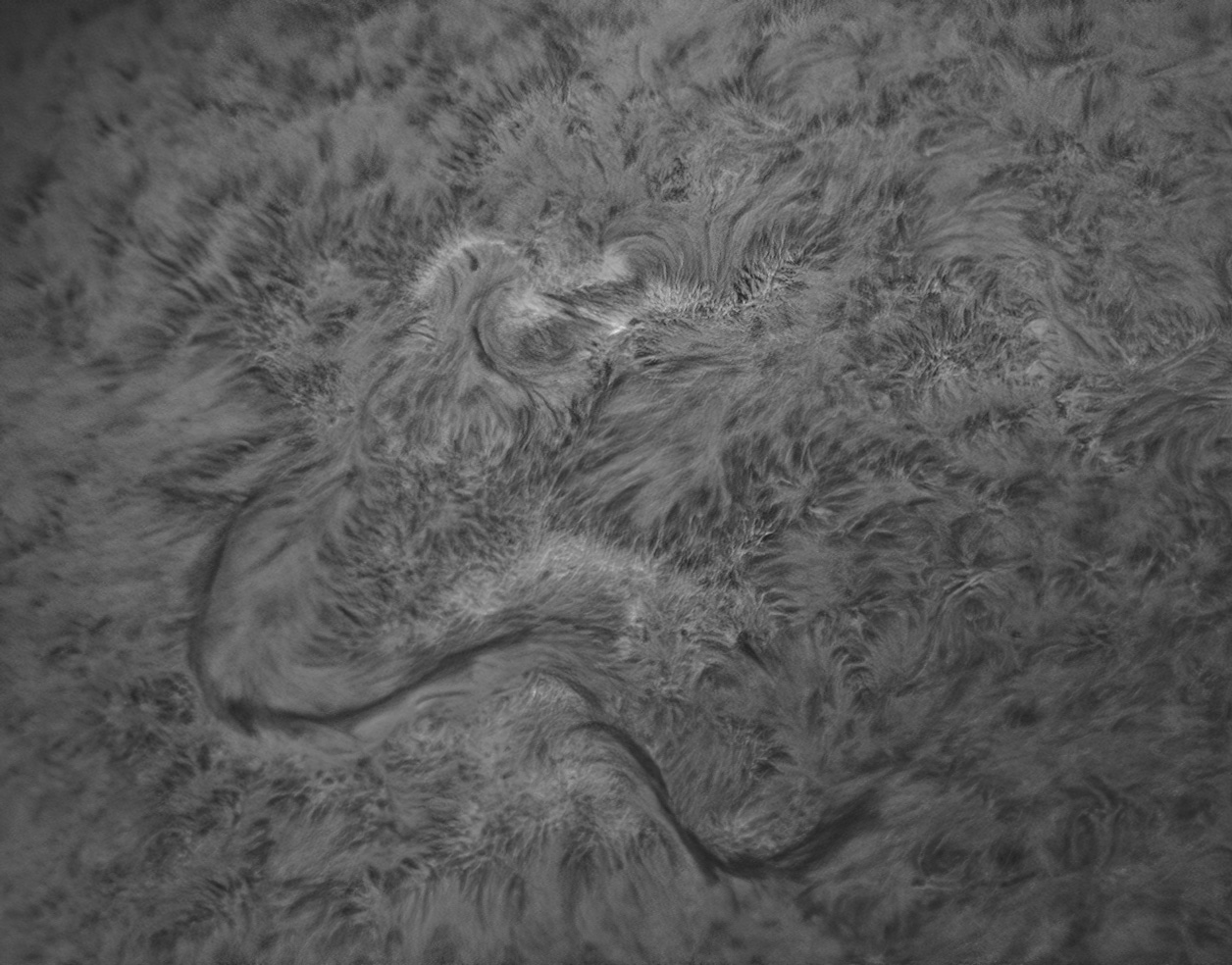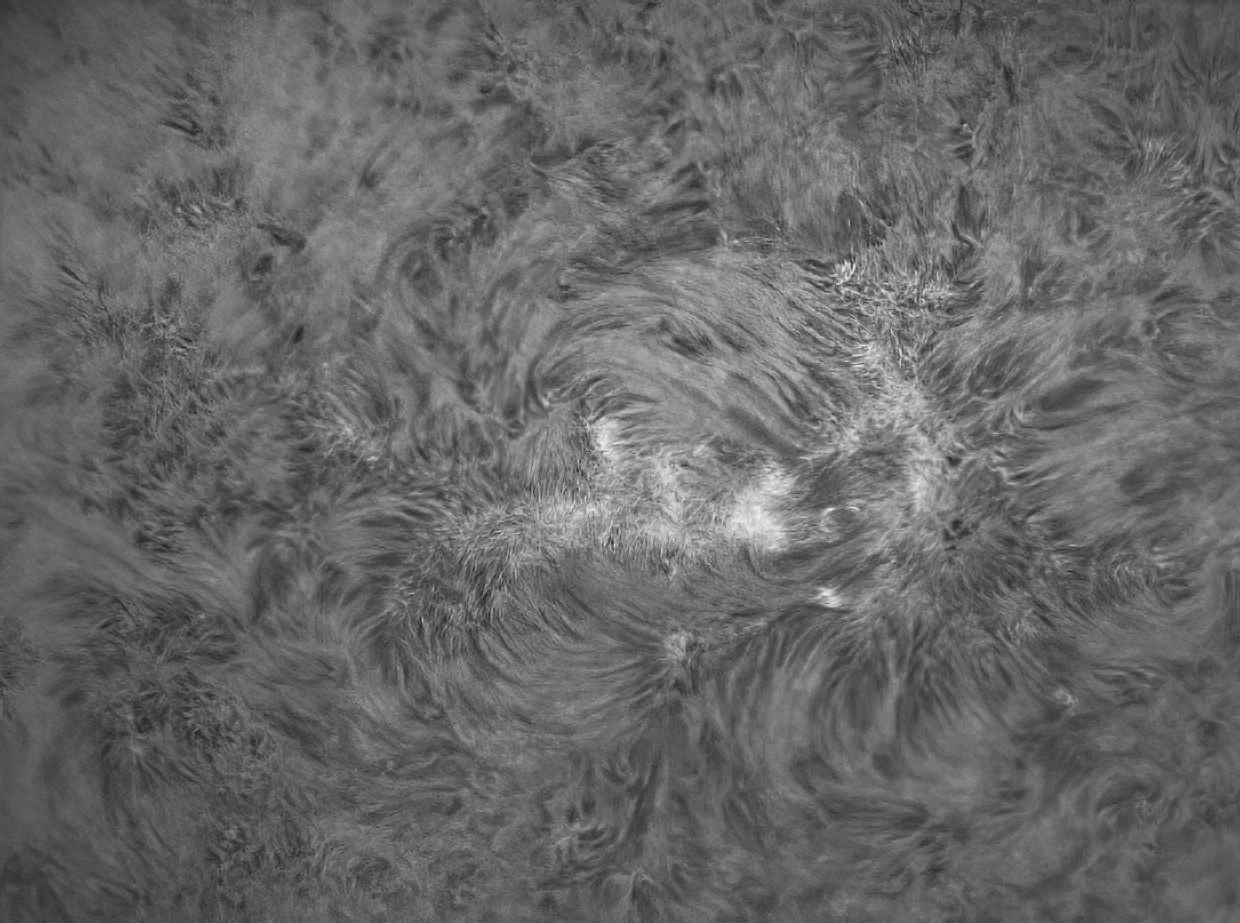Haze. Who cares?
07/25/2021. There must be an ideal combination of high solar elevation and low atmospheric heating, but so far, the earlier I set up the better. This morning, I set up (in seven minutes) at the lake access lot at 9:45 and imaged for half an hour or so. The Sun was somewhere around 40° elevation. I think the raw videos are the clearest so far this "season."

Best 150 of 500
There was a good bit of high haze. After I got this active region centered, I kept taking data no matter what, even when it practically disappeared from the screen with the display parms set for high contrast and high brightness. I could tell the telescope was aimed at something, but that was about it. The finished image is barely distinguishable from the one above which was videoed through much clearer air a few minutes later. So today's first hint is: if the Sun is doing something interestimg, keep filming despite haze. Also, you must be leaving a lot of good stuff on the chip, so keep working at it.
Another hint: if your polar alignment is a bit off, the LXD-55's slowest slewing / guiding speed can be used even as the video rolls to keep things composed. You won't hurt the finished stack.
Yet another hint: I tried 250-frame "snapshots" as well as 1,000 frame captures. 500 frames seems a good compromise between short duration (things on the Sun can move, clouds and haze can interfere) and scooping up plenty of data (the better to be picky about the best frames and still have enough data to average out noise).
Last time out, I discovered a light-leak somewhere around the tilt-plate or the T2 connectors. I'm puzzled, but I don't need to understand the cause of this problem to fix it. I've cobbled up a loose, opaque plastic cover for the camera but haven't tried it out yetd during the high-gain, long-exposure runs required to image prominences above the solar limb. Haze does matter for that, so the effectiveness of the shade remains untested. It interferes slightly with the air-cooling of the chip which was running about 2°C warmer than usual. That didn't make a discernable difference for chromospheric photography, as you see.

Remnant of the bipolar spot I've been following this week.
Best 125 of 250.
7/28/2021. All that said, clearer is better. Some Best 125 of 500 clips from the access lot a couple of days later under clear skies.

